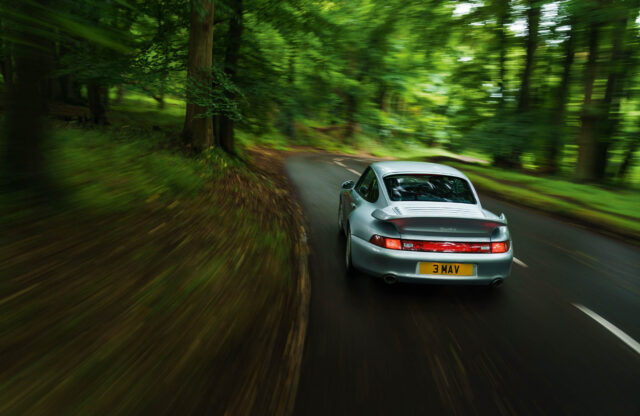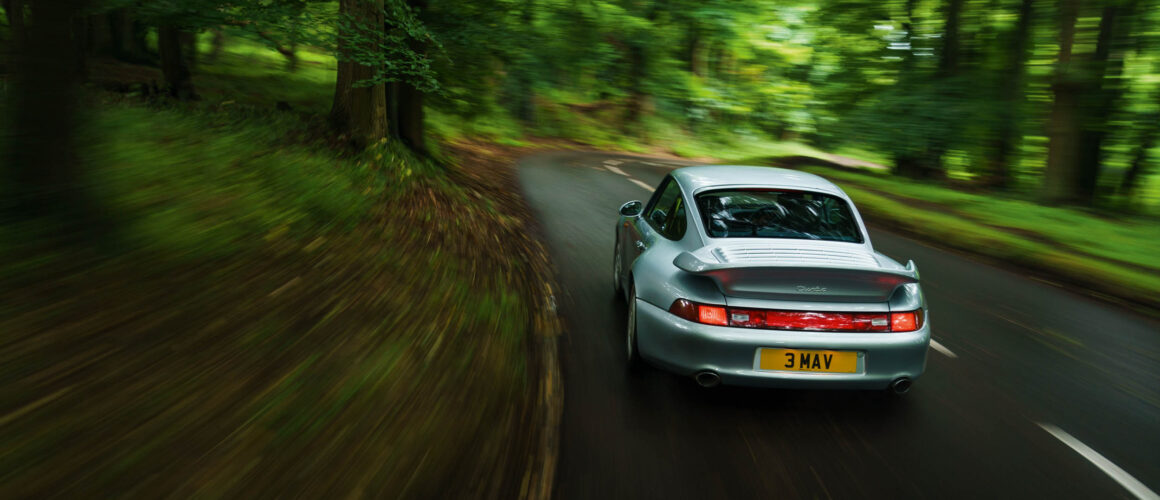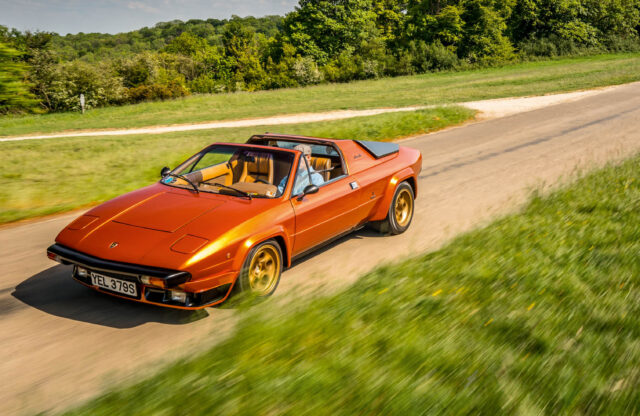It’s 25 years since Porsche launched the 993 Turbo – the most powerful 911 there’d been, and last of the air-cooled line. The best of old and new? Glen Waddington finds out
Cars, like people, are taking longer to age. When I was a youngster in the 1970s, it wasn’t unusual for a family hack to be worn out by the time it was four or five years old. Resprays were common. They broke down. Stuff stopped working. In the early Noughties, my 1974 BMW 2002 felt far more ancient than does my 1989 BMW 320i Convertible today (28 plays 31). My wife’s decade-old daily driver still seems new. And I’m not convinced it’s simply because I’m so much older, too.
In 1994, it was a commonly held belief within senior Porsche management that the 911 had been in this world too long: a rear- engined, air-cooled anachronism. Time for change. Of course, we’d heard that before, hence the Porsche 928 and the various front- engined, transaxle four-cylinders. In 1989, there had been a step-change from the impact- bumper 911 of the 1970s into the 964 generation. It was ‘86% new’, re-engineered to accommodate four-wheel drive and thereby rid the 911 of its widow-maker rep: it was actually launched as the Carrera 4. Yet it barely looked any different. Old before its time.
The 993 generation was regarded as the 911’s last chance, to capitalise on the 964’s regenerated underpinnings but bring the styling into the modern era. Just don’t get in the way of Porsche’s hope for the future: the four-door 989. However prescient that may seem in a world used to the Cayenne and Panamera, it was radical thinking back then. As it turned out, too radical. And too expensive. Cue the 989 project’s cancellation in 1992 and the exit of technical director Ulrich Bez.
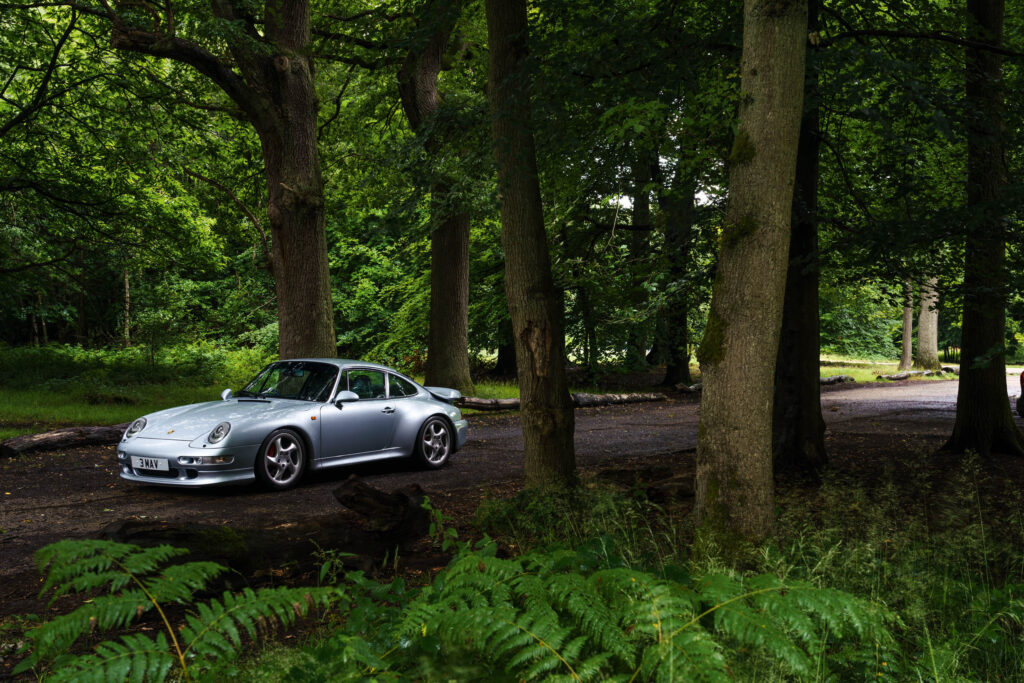
Bez had two stints at Porsche, working in research during the 1970s before leaving to head up BMW’s Technik department. There, with stylist Harm Lagaay, he developed the characterful Z1 before moving back to Porsche in 1988 and taking Lagaay with him, who succeeded Anatole Lapine as head of design.
Back then, Porsche was in trouble, hit hard by the exchange rate and an ageing model line. The company’s board saw the 989 limo as its way out, and Bez had to push hard to get any attention paid to the 911 at all. He was committed to producing an improved car that would cost less to build. The air-cooled flat-six would stay, the basic structure would remain the same, so would the glazing, but there was money for new panels and headlamps, though the new multi-link rear axle – commandeered from the stillborn 989 project – came at the expense of a new interior, and those old- fashioned rain gutters would have to stay, too.
Oh, and for starters there’d simply be a Carrera 2, in coupé and cabriolet form. The 911 would live, but there were no plans at launch for anything faster. All hands elsewhere were on the 989. Including Lagaay’s. So the styling of the 993 was in the hands of British-born Tony Hatter, who had joined in 1986. We’ll come back to him.
In the meantime, you’re looking at pictures of a 993-generation 911 Turbo. So clearly things did evolve. And the whole project was such a success that, on its first test drive of the 993 Turbo, Car magazine declared: ‘You might get used to the Turbo’s tarmac-peeling zest in a straight line, but the way that it corners will never cease to amaze.’ Clearly that new rear suspension layout was doing the trick, then.
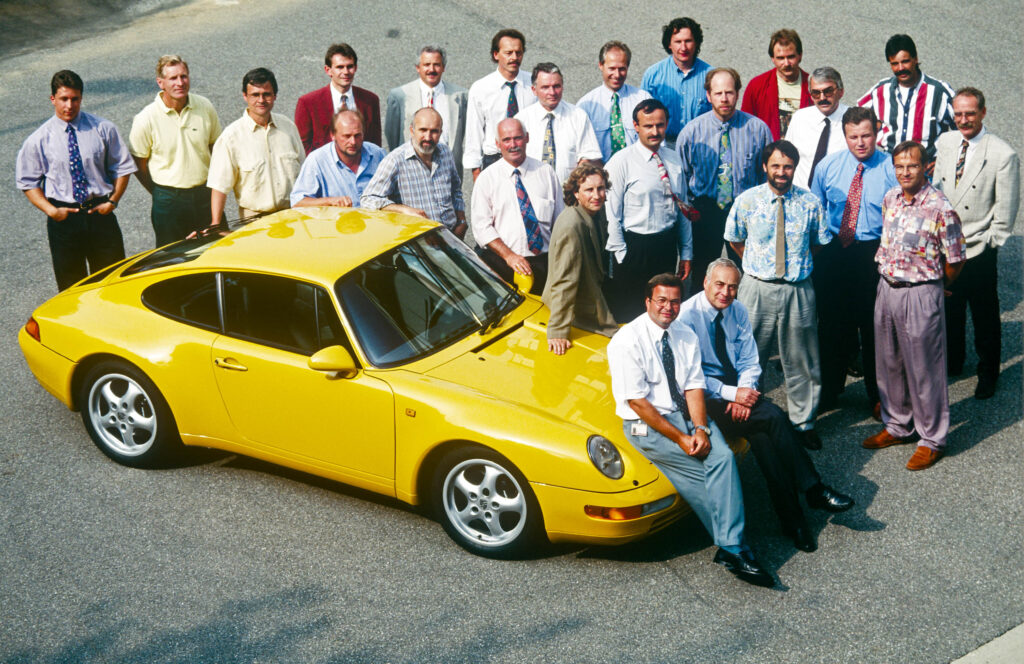
Some stats: 408bhp, 398lb ft, 181mph, 0-62mph in 4.4sec, 1498kg, four-wheel drive, six-speed transmission, two turbochargers. It cost £91,950 when it was launched in the UK in 1995 (the initial allocation of 60 sold out straight away). So it’s 25 years old now, yet that’s a surprisingly modern set of figures (see? I said cars are taking longer to get old). This was the fastest roadgoing 911 up to that point, complete with the personality and solidity of the air-cooled generation yet in a more civilised package. No wonder the owner of this car bought it in place of a much more modern 991. For those whose brain is untainted by such arcane references, that’s the generation that arrived in 2011 and bowed out last year; only the third completely new 911 in 56 years.
But I digress. The 993 Carrera 2 had arrived in late 1993, its new rear suspension in place of the 964’s trailing arms as an attempt to expunge ‘Some stats: 408bhp, 398lb ft, 181mph, 4.4sec, four-wheel drive, six-speed, two turbochargers…’ the worst effects of all that engine weight hung beyond the rear wheels: the new multi-link hardware tends towards stability-inducing toe- in at extremes of movement. Despite early plans to amortise 989 development costs by installing its water-cooled V8 (and possibly a V6 spin-off) in the 993, ultimately it was launched with the same 3.6-litre air-cooled flat-six as before, though with about 10% more power and torque thanks to lighter internal componentry. A new underbody contributed to 20% greater structural stiffness, there were anti-intrusion beams, and a six-speed gearbox for the first time – all this in an update of what was already 86% new, don’t forget. And this time it looked new, too.
When the previous-generation Turbo had arrived in 1990, it did so powered by the old 930’s 3.3-litre engine. The 3.6-litre version appeared in early 1993, shortly before 964 production came to an end, so only 1500 were built. That engine then translated into the 993, only with two turbochargers instead of one, each placed closer to the relevant combustion chambers rather than above the crankshaft, to quell lag, and power was up by 53bhp over the old car’s 355bhp. It was married to that new transmission and sent power to all four wheels – as per the Carrera 4, which had come along a few months after the Carrera 2, mainly to assuage demand in Alpine markets.
Torque is split front:rear by a viscous coupling, there’s a limited-slip differential, and there are geometry changes as well as stiffer springs, gas dampers and anti-roll bars. Also fitted are, of course, airbags and anti-lock brakes, the wheels feature hollow spokes to reduce unsprung weight, and it rolls on sticky 18in tyres, proper garden-rolling 285/30s at the back. Bernd Kahnau led the engineering team and the 993 Turbo was launched at the Geneva motor show in March 1995.
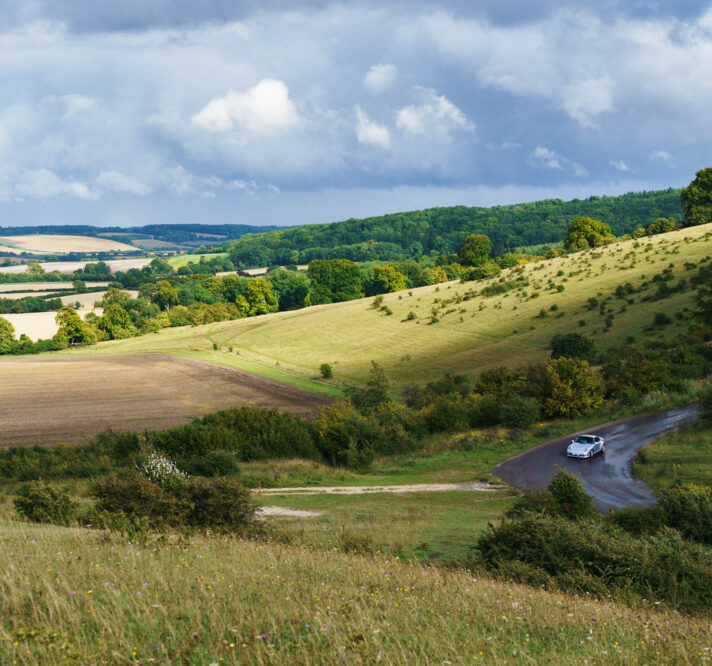
Turn the key and there’s the familiar churn, whir and thrum as the flat-six erupts into life
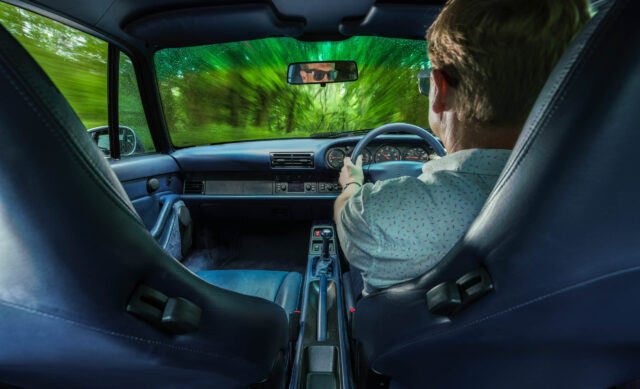
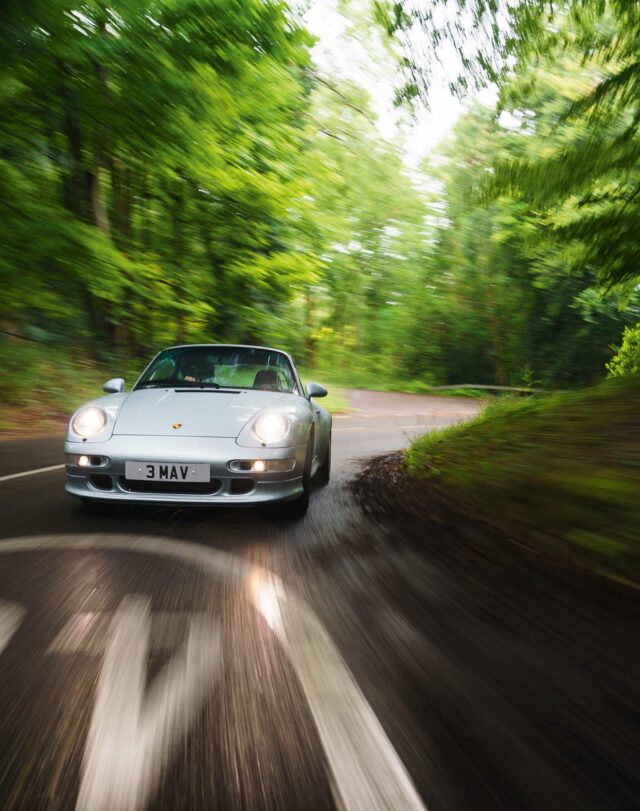
Much of this mechanical detail won’t be seen by most people. What is more visible, and no less welcome, is the styling. Tony Hatter’s career at Porsche has just come to an end after 34 years. His August retirement party might not have been quite what he’d planned, like so much of 2020, but just ahead of that – during an interview conducted via video link; again, like so much of 2020 – he’s in buoyant mood. ‘It wouldn’t matter how long I’d been here, it’d be a big affair. There’s 120 of us in the design department,’ he smiles. ‘We had 30 people in total in the late 1980s at Weissach; designers you could count on one hand, just a few engineers. I’d been hired by Tony Lapine and remember my first day here. I was met by the secretary, Margaret, who collected me at the gate. All the test cars were Guards Red. It was an incredible first impression.’
Hatter is relaxed, softly spoken and slightly husky, his speech flecked with the occasional Germanic influences gathered in three decades, though hints of his native north-east England gradually reveal themselves as our conversation progresses. Every now and then he reaches behind to a low shelving unit and picks up a scale model, better to illustrate a point.
‘The 993 was my first big project. What to do with the 911? The 989 programme had started yet we still thought it best to keep the 911 going, and I certainly don’t remember thinking “this is the last one”. Then came the Turbo. More than 400bhp and four-wheel drive. Surely it couldn’t go further than this.’
So, where do you start when reinventing a legend? ‘When I got there, there’d been efforts to create the 965, a sort of toned-down 959. It was a bit heavy and bloated, as if a 928 had morphed into a 911. What I set out to do was to make the 993 more refined and visually lighter in weight, plus a bit better-balanced than the 964. We brought the front and rear bumper shutlines to the same height; made highlights in the wings where they’d been slabby.’
But there was a problem. ‘It was very tricky,’ he frowns. ‘The body and chassis were more than 25 years old, with tolerances in centimetres rather than fractions of a millimetre. Fitting large polyurethane mouldings to such an old structure – we’d never had to do such things before. There were big shutlines: they could differ by 3-10mm from side to side, for instance, between the rear bumper and the tail-lights.’
There was modelling expertise on hand to help, at least. ‘We had very experienced modellers who’d worked on the 356C, the 901, et cetera.’ His favourite aspect? ‘For me, the front end.’ He picks up that model and points out aspects as he describes them. ‘It’s a very simple front end, with a two-piece bumper. The shark gills for the oil coolers… I lay on the floor with the modeller as he shaped that area.’
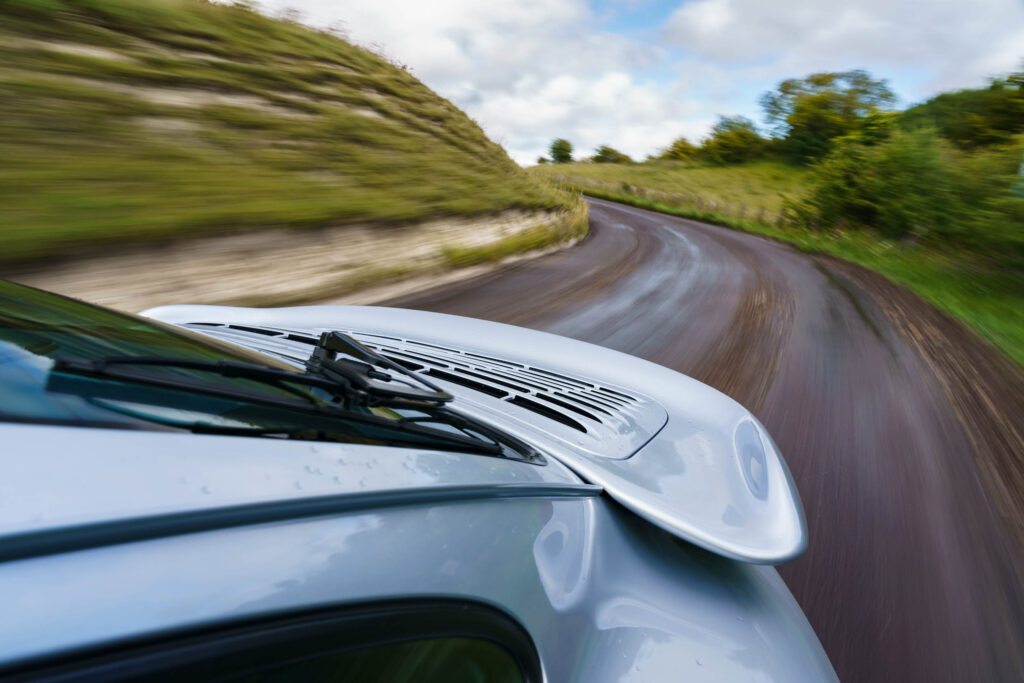
A new family look was occurring within Porsche’s range at that time, though Hatter denies that the 993 was consciously developed along such deliberate lines. ‘As far as the 993 goes, the 959 had given us curves, and the 989 was happening, too. The 968 also came out before the 993. So, for sure, there’s cross- pollination but we weren’t doing that on purpose, and obviously there are shared parts, such as doorhandles and mirrors.’
One obvious departure for the 993 was its centrally mounted windscreen wipers. ‘Old 911s in the rain, well, exciting is the wrong word. I arrived at work one day after a party. Dick Söderberg was the studio chief; he packed me into the back of a 964 with the new set-up and got in the passenger seat, and we set off down the old Wurzheim road in heavy rain. I was stuck in the back, not feeling great, evaluating them. They worked! Brilliant.’
And then came the Turbo. ‘It’s all about the profile, and that beautiful tapering rear end. The Turbo is 25mm wider each side across the rear. We changed the sills, made it a much more substantial car. Of course, the doors were the same as the 964’s; they dated back all the way to 1962! They look simple but they start to flare out towards the lower rear corner, so it’s a nightmare flowing into the rear, mating old to new. If I could have changed anything else it would have been the doors.’
I’m glad about those doors. They clunk shut with the sound of quality engineering, rather than a sound that’s been engineered: it’s definitively an air-cooled 911 thing, as much a part of its aural signature as the gnashing shriek of that unjacketed flat-six. Also extremely familiar is the interior, though some of the switchgear was new to the 993 and the centre console tidied up. The glovebox has been shifted downwards to make way for a passenger airbag, and – probably most noticeable – the hockey-stick doorpulls of old have been reshaped to blend with the dashboard’s lower rail, itself more prominent and padded.
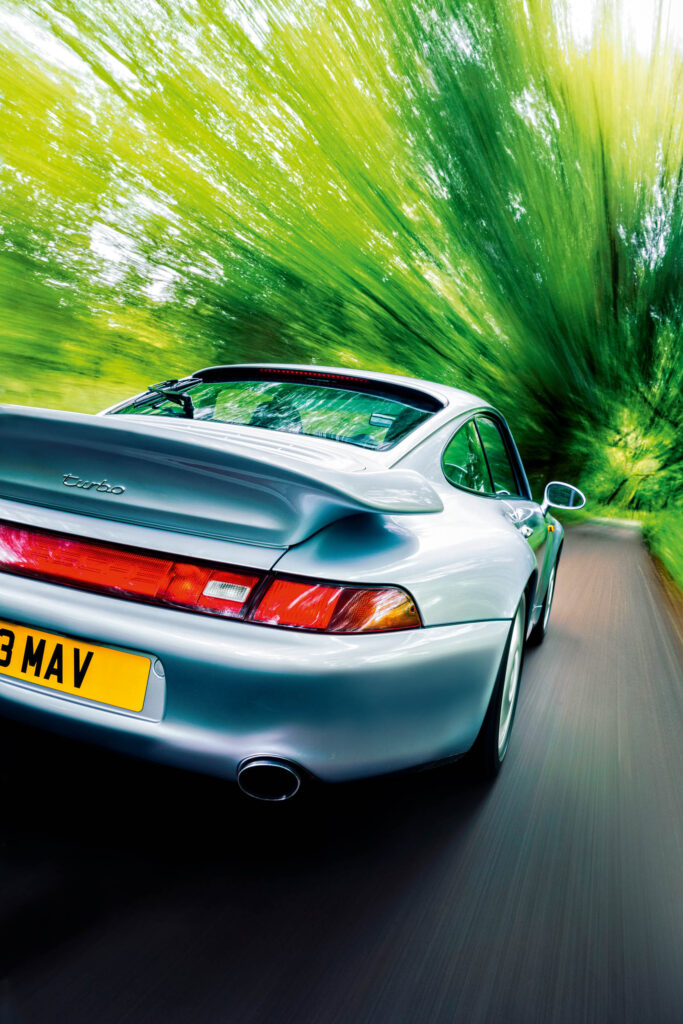
In the rear-view mirror you can see the Turbo-specific tail spoiler, permanently in place rather than swinging up with speed as per the Carrera 2’s. Lighting the road ahead are new headlamps, less obvious from within than the 964’s because the wingtops have been smoothed out, but significant in their own right as the angle to which the light units could be reclined was determined by the technology they contained. Just as similar ones had signalled the end of the 944’s pop-up headlamps as it became the 968, so the 993’s meant the 911’s ‘torpedo tube’ front wings were no more.
Turn the key in the dash-mounted ignition slot and there’s the familiar churn, whir and thrum as the flat-six erupts into life. As has always been the case with right-hand-drive 911s, you sit slightly skewed, and while the fat hub of the airbag wheel is strange, the tactile nature of its leather rim feels familiar.
Promisingly, there’s lots of travel to the organ-pedal throttle; the brake and clutch pedals are floor-hinged, too. Curiously, and despite a power output higher than any 911’s before it, there’s less in the way of intimidation here. Maybe it’s because engine noise is a little less pervasive, or because power-assistance eases manoeuvring; maybe it’s just the promise of four-wheel drive to safeguard you in extremis. Whatever, I prod the throttle, ease out the hefty, over-centre clutch and head off.
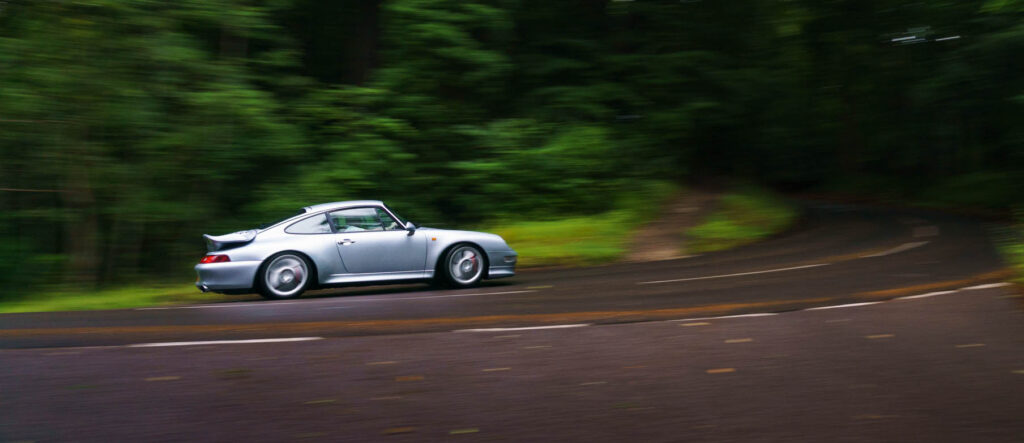
This is a refined car. You feel as much in the control actions and the burgeoning power under the command of your right foot. Accelerate and there are no histrionics, simply a linear – if rapid, so rapid – journey around the revcounter. It’s thrillingly addictive, and the silencing effect of forced induction means the vocals do just enough to raise the hairs on the back of your neck without being so loud as to grate on your nerves. Grab the next gear and it’s the same all over again; you don’t have to wait for the turbos to spool-up.
In a 930 – introduced in 1975 and in production for 14 years! – you had just the four gears to pull against and a relationship with the turbocharger that was akin to lighting a firework then wondering when it would go off. Suddenly: BOOM! And you entered another dimension. There’s similar intensity in the 993, but far less tension as the thrust is there from the off.
Those six gears and the lag-free nature of the twin-turbo flat-six are the reason. More power, more torque than had ever been made available to any previous 911 driver (in a road car, anyway) but delivered in a way that takes it way beyond its sports car roots and the 930’s Countach-like supercar pretensions into the world of the GT. Not a lazy, slush-pumping Rothman’s ad 1970s torque-monster GT, but the world of high-performance cars that don’t tire you out despite asking you to do some work, and still reward you with the kind of sensations that matter more than mere performance data. The 993 Turbo offers the best of both worlds here.
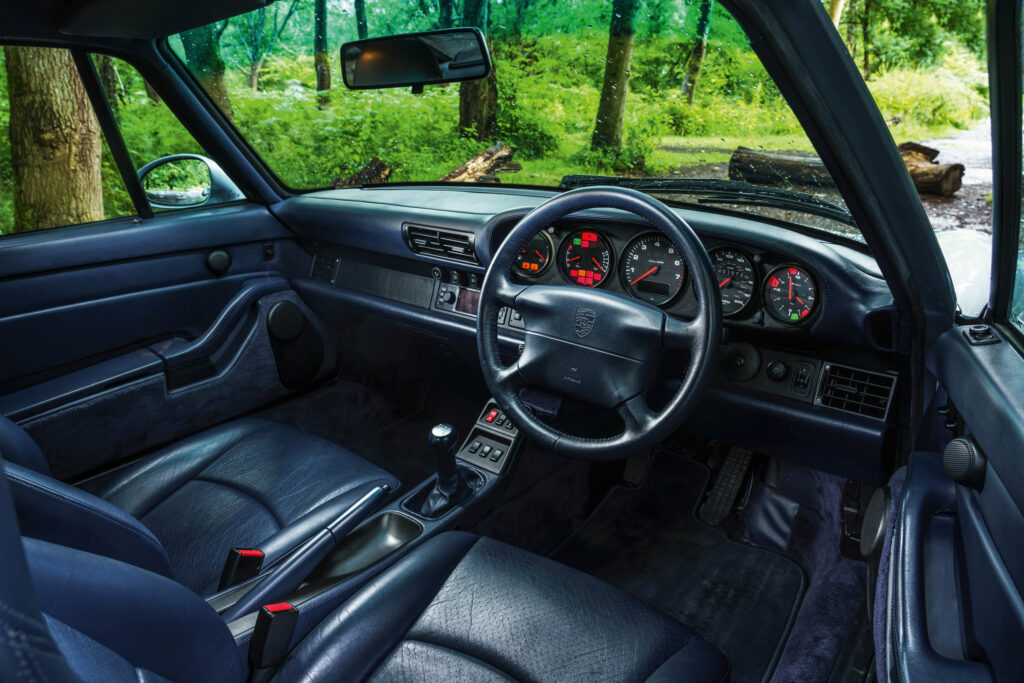
So you quickly become more accustomed, more confident. There’s rim-jinking feedback through the steering wheel even though it’s assisted, while the brakes are firm underfoot and make the 911 as astonishing in deceleration as it is in getting up to speed. The ride feels firm yet it’s deftly damped and never harsh. And – perhaps best of all – even though this is a wide-body 993, deliberately made so much more substantial by Hatter and co, today it feels compact. So it’s scaled for British B-roads. Or a California canyon. Or an Alpine col. The 933 Turbo is nimble.
And it’s friendly, too, with most of the subtle sensations of a Carrera 2, the added balance and security of the Carrera 4, and even greater acceleration, yet combined in such a coherent package that there are few raw edges. Sure, the nose still bobs over bumps, and you still feel the inevitable weight transfer: if you don’t get the 993 planted on its front wheels going into a corner, you’ll curse your lack of expertise in making the damn thing understeer through it.
But you get to appreciate more of it, more of the time. You can relish a vigorous work-out yet still drive a long way without feeling worn out. The perfect blend.
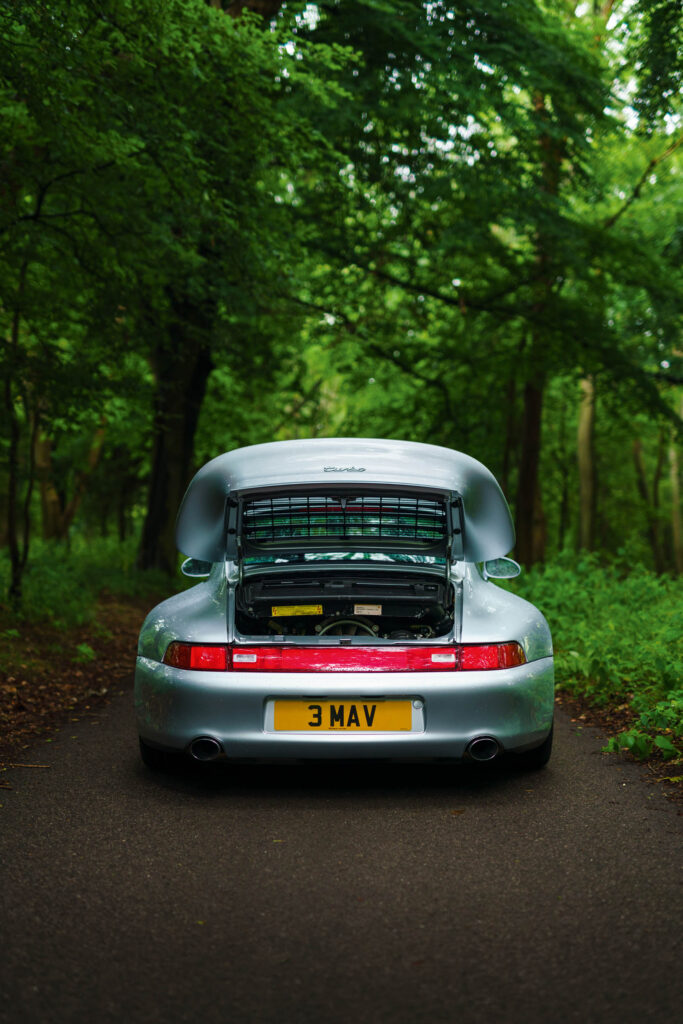
Those who’d prefer more of the Jekyll and Hyde could go for the Turbo S, a further development that arrived in the final year of 993 production, with power up to 444bhp thanks to bigger turbochargers. Or there’s the nutcase rear-drive GT, the roadgoing homologation version of the GT2 racer, for ultimate thrills and (inevitable) spills.
We’re looking back 25 years here, astonished at how far Porsche had managed to develop that unassuming 130bhp 2.0-litre sports car of 1962. It consistently defied age like a Hollywood beauty and remains a car that charms in ways new ones can’t. It feels compact by today’s standards, exudes that ‘they don’t build ’em like they used to’ unburstability, and its soundtrack goes back more than half a century. It will also surge along with hypercar vehemence yet deliver you sufficiently unruffled at the end of a journey to want more, and it comes with the reassurance of strong anti-lock brakes and airbags, too.
Excitement without a taxing temperament. Exhilaration without threat. An older car that might just keep you young.
Buying and running a 993 Turbo
‘Owners get the best of both worlds,’ says Greig Daly, sales and marketing director at Porsche specialist RPM Technik.
‘Arguably the 993 is the prettiest generation of 911 and you get the full air-cooled experience, yet it’s properly rapid, even today. The perfect amalgam of old and new.’
The car in these pictures belongs to a customer of RPM Technik. ‘It’s a rare example: no sunroof, 22,000 miles, one previous owner. So it has a market value of £150,000. But you can pay £175,000, maybe £200,000 for a car with even lower mileage, and the entry point is more like £80,000-90,000, for a car with 80,000-120,000 miles. At those prices there will be maintenance issues to keep on top of.’
The engine is chain-driven, so no cambelts to swap, but turbos can crack, intercoolers can leak, brake discs, suspension springs, dampers and bushes all wear, and the clutch puts up with a lot of abuse thanks to all that power and torque and the immense four-wheel-drive traction: ‘You can quickly get into five-figure preparation bills, so make sure to buy from an experienced source,’ says Daly.
However, it’s an inherently strong car, with a major service due every 24,000 miles or four years, and while that clutch replacement can cost £2000, it’s good for up to 40,000 miles.
1996 Porsche 911 Turbo Specifications
Engine 3608cc air-cooled flat-six, OHC per bank, Bosch DME fuel injection and management, twin intercooled KKK K-16 turbochargers
Power 408bhp @ 5750rpm
Torque 398lb ft @ 4500rpm
Transmission Six-speed manual, four-wheel drive
Steering Rack and pinion, power-assisted
Suspension Front: MacPherson struts, coil springs, anti-roll bar. Rear: multi-link, coil springs, telescopic dampers, anti-roll bar
Brakes Vented discs, ABS
Weight 1498kg
Top speed 181mph
0-62mph 4.4sec
